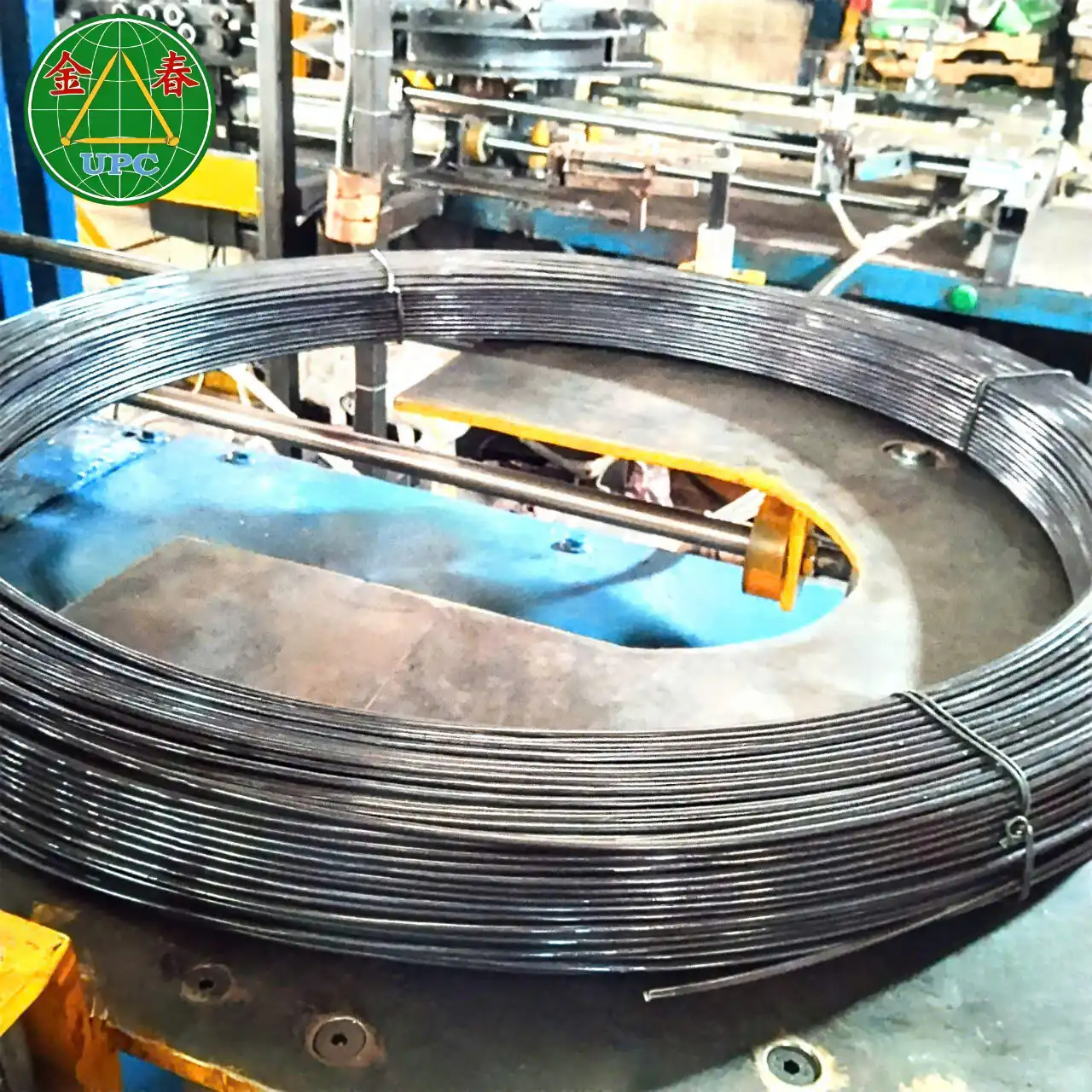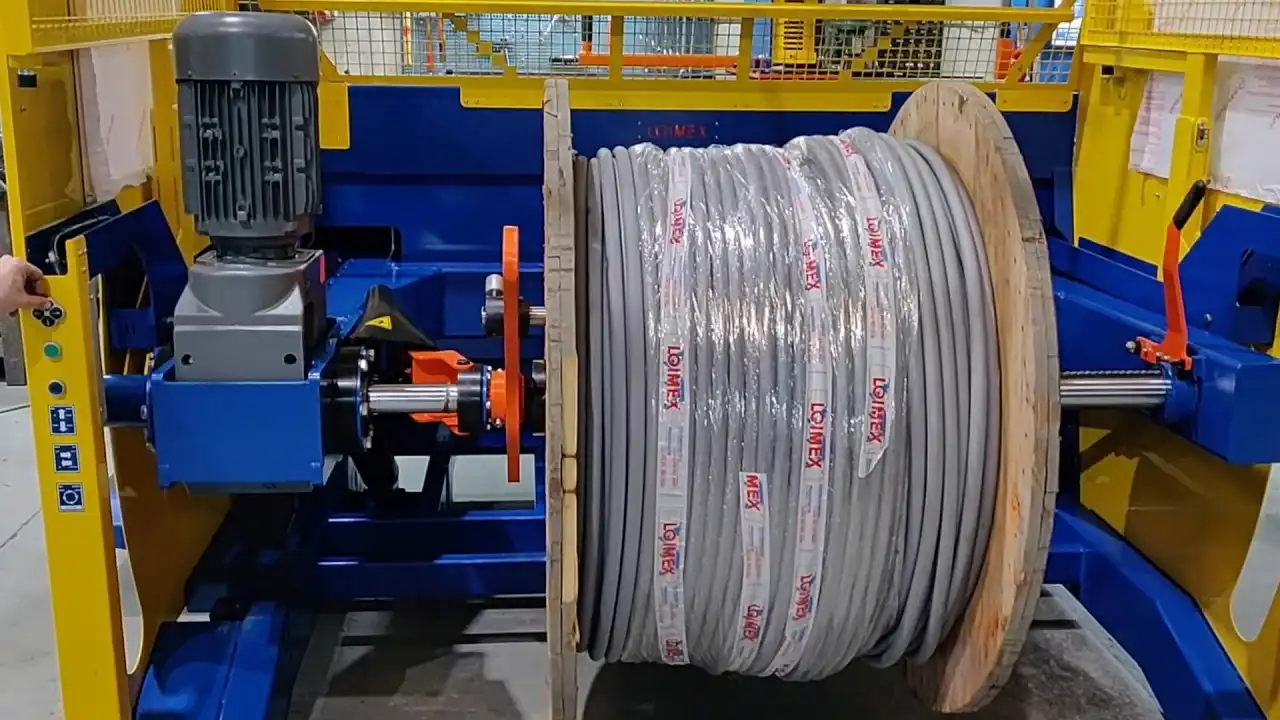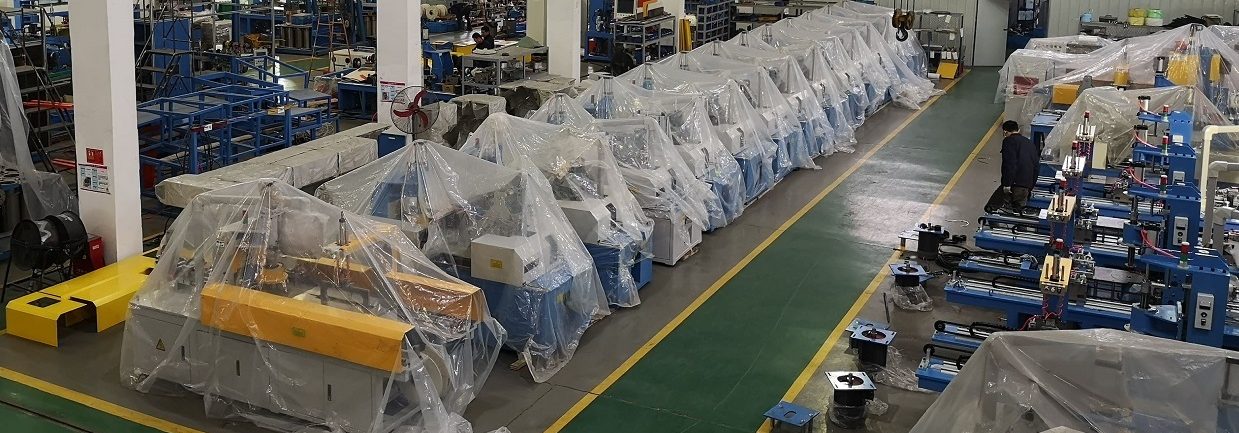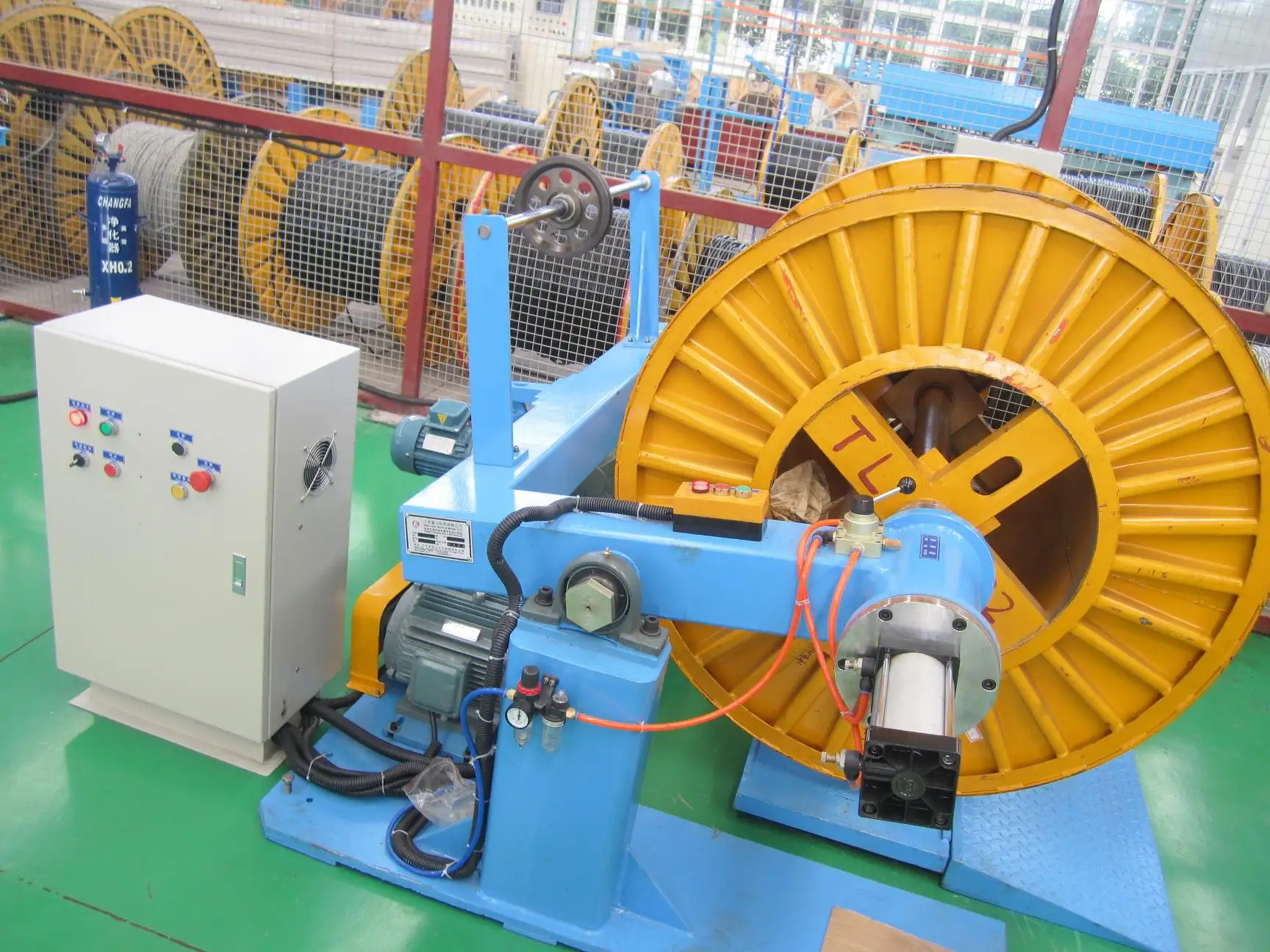Are you struggling to get consistent performance from your steel wire strapping machine? One day everything runs smoothly, but the next, you're dealing with snapped straps, loose bundles, or machine jams. This inconsistency slows down your entire production line, creates safety risks, and can even lead to damaged products. I know this frustration well. As a factory manager, you're under pressure to keep things moving efficiently, and a temperamental strapping machine feels like a constant battle you can't win. You need a reliable process, not a daily guessing game.
Optimizing your steel wire strapping machine for different materials involves a systematic approach focusing on three core areas: mechanical adjustments, tension settings, and the sealing method. For different strap types, like polypropylene (PP) or steel, you must adjust the feed mechanism, guides, and tensioner to match the material's thickness, rigidity, and elasticity. Properly calibrating the tension ensures the load is secure without damaging the product, while selecting the correct sealing method—whether heat seal for plastic or a crimped seal for steel—guarantees the strap holds under pressure during transit.

These adjustments might sound complex, but they are the key to unlocking consistent, reliable performance. I’ve walked countless factory floors and seen firsthand how overlooking these details leads to major bottlenecks. The good news is that understanding these principles transforms your machine from a source of problems into a powerful asset. In this article, I will break down each element. I'll share the practical knowledge I gained from building my own packing machine factory, so you can make the right adjustments and turn your strapping process into a smooth, efficient, and safe operation. Let’s dive in.
What Key Machine Adjustments Are Needed for PP vs. Steel Straps?
You've decided to switch from steel strapping to polypropylene (PP) to save costs, or perhaps the other way around for heavier loads. But after feeding the new material into your machine, nothing works right. The PP strap misfeeds and melts in the wrong place, or the steel strap is so rigid it gets stuck in the guides. This is a common headache. It stops your production and makes you question if the switch was a good idea. You feel stuck because your machine, which is supposed to handle different materials, is now the biggest obstacle to improving your process.
The key to successfully switching between PP and steel straps lies in adjusting the machine's core mechanical components. You need to change the strap guides, adjust the tensioning mechanism, and re-calibrate the sealing unit. Steel straps require robust, wider guides to handle their rigidity, while PP straps need smoother, more enclosed guides to prevent buckling. The tensioner needs to be set for steel's lack of elasticity versus PP's tendency to stretch. Finally, the sealing head must be switched from a friction or heat sealer for PP to a mechanical notcher or sealer for steel.

These might sound like separate issues, but they are all connected. A strapping machine is a finely tuned system, not a one-size-fits-all device. When I started my factory, one of our first big challenges was creating a line that could handle different customer packaging requirements without hours of downtime for changeovers. We learned that a simple checklist and properly trained operators were just as important as the machine itself. Let's break down exactly what you need to look at to make your machine run smoothly with any strap.
Understanding Material Properties
The first step is to respect the fundamental differences between steel and plastic strapping. They behave very differently under stress and require different handling.
- Steel Strapping: It's incredibly strong and rigid with very little stretch (low elongation). This makes it ideal for securing heavy, stable loads like steel coils or construction materials that won't compress. However, its rigidity means it needs a machine with a strong feeding mechanism and guides that can handle its weight and lack of flexibility without jamming.
- Polypropylene (PP) Strapping: This material is more flexible and has higher elongation, meaning it can stretch. This is useful for bundling products that might settle or compress, as the strap can contract and keep the load tight. But this flexibility also means it can easily snag, twist, or buckle if the machine guides are not perfectly aligned and smooth.
Critical Machine Adjustment Points
Based on these properties, here are the specific areas on your strapping machine that need attention. I recommend creating a standard operating procedure (SOP) with your maintenance team for these changeovers.
| Adjustment Area | Adjustment for Steel Straps | Adjustment for PP/PET Straps | Why It's Important |
|---|---|---|---|
| Strap Chute/Guides | Use wider, heavy-duty guides. Ensure they are robust enough to handle the weight and prevent bending. | Use smoother, often enclosed, guides. Ensure there are no rough edges or gaps where the strap can catch. | Prevents misfeeds and jams, which are the most common source of downtime during strapping. |
| Feed & Retract Tension | Higher feed tension is needed to push the heavy strap through the chute. | Lower feed tension is sufficient. Too much can cause the strap to buckle inside the machine. | Ensures the strap reliably circles the package without getting stuck or creating a "bird's nest" of tangled strap. |
| Tensioning System | Requires a powerful tensioner. The machine pulls the strap extremely tight with minimal elongation. | Requires a system that can manage stretch. The machine might need to pull, pause, and pull again to remove slack. | Correct tensioning is vital for load security. Steel provides brute force; plastic provides dynamic tightness. |
| Sealing Head | Mechanical sealer (notch or crimp style). This physically deforms the strap and a metal seal to join them. | Heat or friction-weld sealer. This melts the strap ends together to form a strong bond. | The seal is the weakest point. Using the wrong method means the strap will fail under load. |
In my experience, many factories, especially in demanding environments like metal processing, underestimate the importance of the strap chute. I once visited a client in Mexico, a manager much like yourself, Michael, who was experiencing constant jams with PET strapping. His team was blaming the strap quality. But when we inspected the machine, we found the internal guides were worn and had developed sharp edges from years of running only steel straps. These sharp edges were snagging and shredding the softer PET strap. A simple part replacement and polishing of the guides solved a problem that had been costing them hours of production each week.
How Does Strap Tensioning Impact Load Security and Product Integrity?
Your team just strapped a pallet of finished steel wires. The straps look tight, and the pallet seems secure. But by the time it reaches the customer, the load has shifted, the straps are loose, and some of the wire coils on the edge are crushed. The customer is unhappy, and you have to account for another product loss. This situation is frustrating. You've invested in a strapping machine to secure your products, but if the tension isn't right, you are creating new problems—damaged goods and unsafe loads—instead of solving them.
Proper strap tensioning is a delicate balance between securing the load and protecting the product. The optimal tension depends on both the strapping material and the type of load. For rigid loads like steel coils, high tension with steel straps is necessary for stability. For compressible loads, using a plastic strap with controlled tension is key, as it can adapt to the load settling without causing damage. The goal is to apply enough force to unitize the load but not so much that it crushes corners, damages edges, or compromises the product's integrity.

Finding this sweet spot is critical. It's the difference between a product arriving safely and a costly customer complaint. As someone who has helped many clients fine-tune their packaging lines, I can tell you that tension calibration is not a "set it and forget it" task. It requires understanding and regular checks. Let's explore how to master strap tension for different scenarios to ensure your products are always safe and secure.
The Science of Tension: Elongation and Retained Tension
To get tension right, we need to talk about two concepts: elongation and retained tension.
- Elongation: This is how much a strap stretches when tension is applied. Steel has very low elongation (almost none). PP and PET (polyester) straps have higher elongation.
- Retained Tension: This is the amount of tension that remains in the strap over time. As loads settle or temperatures change, straps can lose tension. Plastic straps, especially PET, are excellent at this. They have good "elastic memory," meaning they try to return to their original length, keeping the load tight even if it shrinks or compresses.
Thinking about these two factors helps you choose the right strap and set the right tension.
Matching Tension to Your Load Type
The type of product you are strapping is the most important factor in determining the correct tension settings. Loads are not all the same.
| Load Type | Description | Ideal Strapping Material | Tensioning Strategy | Common Mistakes |
|---|---|---|---|---|
| Rigid Loads | Products that do not compress or change shape, like steel beams, coils, or stone blocks. | Steel Strapping | High tension. The goal is to lock the items together so they cannot shift. | Using plastic strap that can't provide enough force, leading to loose loads. |
| Compressible Loads | Products that can be squeezed or will settle, like bundled textiles, corrugated boxes, or hay bales. | PP or PET Strapping | Moderate tension. Apply enough to unitize, but allow the strap's elasticity to absorb compression. | Over-tensioning, which crushes the product edges and causes damage. |
| Expanding Loads | Products that may expand after strapping, like freshly baled recycled materials. | PP Strapping | Lower initial tension. The strap needs room to stretch as the product expands, preventing snap-backs. | Using steel strap, which has no give and can snap dangerously if the load expands. |
| Shrinking Loads | Products that shrink as they cool or dry, like freshly cut lumber or hot-filled plastic containers. | PET Strapping | High tension. PET's high retained tension will keep the load secure as it shrinks. | Using PP strap, which may not have enough retained tension and can become loose over time. |
A few years ago, a large steel wire manufacturer contacted me. They were having a serious safety issue. Their manually strapped wire coils were arriving at their customers' facilities with loose straps. During offloading, one of these coils shifted, and a worker was nearly injured. Their problem was they were using the same tensioning approach for small, tightly wound coils as they were for larger, looser coils. The larger coils would settle during transit, and the initial tension was lost. We introduced an automated strapping machine with PET straps and two tensioning modes. For the larger coils, the machine would apply an initial tension, pause for a second to allow the coil to compress, and then apply a final, higher tension. This simple two-stage process ensured high retained tension and completely solved their problem. It’s a perfect example of how understanding the load's behavior is key to getting tensioning right.
Why is the Sealing Method Critical for Different Strapping Materials?
You've done everything right. You've selected the perfect strap for your product and dialed in the tension perfectly. The strapped pallet looks great as it leaves your facility. Yet, you still get a call from your logistics partner: a strap has failed in transit. The seal just came apart. This is incredibly frustrating because the seal is the single point of failure that can undo all your other careful preparations. A weak or incorrect seal completely compromises the safety and security of your load, leading to potential product damage and safety hazards.
The sealing method is critical because it must be specifically matched to the properties of the strapping material to create a joint that retains a high percentage of the strap's original strength. For plastic straps like PP or PET, a friction or heat weld is used to melt and fuse the material, creating a strong, seamless bond. For steel straps, a mechanical joint is created using a metal seal and a sealer tool that crimps or notches the strap ends together, providing a durable physical lock. Using the wrong method or a poorly maintained sealer will result in a weak joint that fails under pressure.

Think of the seal as the lock on a chain. If the lock is weak, the strength of the chain doesn't matter. From my experience building and servicing these machines, I've seen that seal failure is often traced back to a simple lack of maintenance or using the wrong type of seal for the job. It's a detail that is easy to overlook but has massive consequences. Let’s look at the different sealing methods so you can ensure your "lock" is always secure.
Common Sealing Methods and How They Work
There are three primary sealing methods used in automated strapping machines. Each is designed for a specific type of strap and application.
- Heat Seal: This method is primarily used for PP strapping. A heated blade is inserted between the two strap ends, melting them slightly. The blade retracts, and the ends are pressed together, fusing as they cool. It's a cost-effective method but requires precise temperature and timing control.
- Friction Weld (Vibration Seal): This is the most common method for both PP and PET strapping. The machine presses the strap ends together and rapidly vibrates them. The friction generates intense heat, melting and fusing the material. This creates a very strong and reliable seal, often retaining up to 85% of the strap's original strength.
- Mechanical Seal (Notch/Crimp): This method is exclusively for steel strapping. A separate metal seal is placed over the overlapping strap ends. A sealer tool then applies immense pressure, either by creating notches (a "notch joint") or by crimping the seal's edges (a "crimp joint"). This physically locks the straps together.
Choosing and Maintaining Your Sealing System
The right choice depends on your material, but maintenance is universal. A poorly maintained sealer is a failed seal waiting to happen.
| Sealing Method | Best For | Key Maintenance Checks | Signs of Failure |
|---|---|---|---|
| Heat Seal | Polypropylene (PP) | Check for carbon buildup on the heat blade. Verify temperature settings are correct. Ensure pressure pad is clean. | Incomplete seals, "cold welds" that pull apart, or melted/burnt straps. |
| Friction Weld | PP & Polyester (PET) | Inspect the gripper teeth on the tensioner and sealer. Clean away plastic dust buildup. Check the vibration motor and alignment. | "Feathery" or stringy seals. Seals that are not centered. Inconsistent seal strength. |
| Mechanical Seal | Steel Strapping | Regularly inspect the notcher or crimper jaws for wear and tear. Ensure the sealer is fully cycling. Check seal magazine for jams. | Seals that slip or pull apart. Deformed or cracked metal seals. Incomplete crimps. |
I remember a client in the steel industry who was facing a serious supplier trust issue, just like you, Michael. They had bought a machine from a company that disappeared after the sale. Their steel straps were failing, and they were losing money on damaged goods. When I visited them, I immediately checked the sealer head. The notching jaws were completely worn down. After years of use, they were no longer cutting deep enough into the steel strap to create a secure lock. The fix was a simple replacement of a wear part, but their previous supplier had never told them about this basic maintenance task. For them, it was a revelation. It showed them the value of working with a partner who doesn't just sell a machine but provides the knowledge to run it effectively. This experience reinforced my belief that sharing knowledge about these "small" details is the most valuable service I can offer.
My Insight: Why Your Strapping Material Choice is About More Than Just the Machine?
You might be thinking that once you have the right machine settings, your job is done. But after spending over 20 years in this industry, from working on the factory floor to building my own, I can tell you this: optimizing a strapping line is not just a technical problem, it’s a business strategy problem. Factory managers like you, Michael, are under pressure to do more than just prevent strap jams. You need to lower costs, improve safety, and increase throughput. You’re looking for a total solution, not just a machine that works.
Your choice of strapping material—steel versus plastic—is a strategic decision that impacts your operational costs, employee safety, and even your carbon footprint. It's not just about what the machine can handle. It’s about what your business needs. Steel offers maximum strength but comes with higher costs and safety risks from sharp edges and recoil. PET offers a safer, often more cost-effective alternative with excellent retained tension, making it a powerful contender for many applications that traditionally used steel. The ultimate goal is to find the material that provides the required load security at the lowest total cost of ownership, which includes material price, machine maintenance, labor, and the cost of potential injuries or damages.

This is where I feel my journey can help. I didn’t just sell machines; I built a factory from the ground up. I faced the same challenges you do—managing budgets, ensuring worker safety, and satisfying customers. That experience taught me to look beyond the machine itself and analyze the entire packaging process. This is the expert guidance I want to share. Let's weigh the real-world pros and cons of these materials from a factory manager’s perspective.
The True Cost of Steel Strapping
For decades, steel was the only choice for heavy-duty applications. It's strong, no doubt. But we must look at the hidden costs.
- Safety Risks: This is the biggest factor. I've seen serious injuries from steel straps snapping under tension or from workers cutting themselves on the sharp edges. The cost of one significant injury—in insurance, lost time, and morale—can outweigh years of any perceived benefit of using steel.
- Product Damage: While steel is strong, it has no give. If a load settles, the strap can become loose. If over-tensioned on a softer product, its unforgiving edge can bite into and damage your goods, leading to customer complaints and write-offs.
- Volatile Pricing: The price of steel is subject to global market fluctuations, making it difficult to budget for your packaging material costs accurately.
- Disposal and Rust: Steel straps are heavy and can be difficult to dispose of. They can also rust and stain your products if they are stored in a damp environment.
The Rise of High-Strength PET Strapping
Modern polyester (PET) strapping has changed the game. It is not the same as the cheap plastic strapping of the past.
| Feature | Steel Strapping | PET Strapping | The Manager's Takeaway |
|---|---|---|---|
| Safety | High risk of recoil and cuts. Requires special safety cutters and PPE. | Much safer. No sharp edges. Elongates before snapping, reducing recoil energy. | Reduced risk of injury. This lowers insurance premiums and improves employee morale. For a manager, this is a huge win. |
| Cost | Higher price per foot. Volatile market pricing. Heavier, so higher shipping costs. | Typically lower cost per foot. More stable pricing. Lighter, reducing shipping costs. | Lower and more predictable operational costs. This directly impacts your bottom line and makes budgeting easier. |
| Performance | Highest tensile strength, but low retained tension. Can become loose if load settles. | High tensile strength (up to 80% of steel) and excellent retained tension. Stays tight. | Better load security for many products. PET's elastic memory means fewer loose loads and fewer customer complaints. |
| Product Damage | Sharp edges can cut into and damage products, especially at the corners. | Softer material with more give. Less likely to damage product edges. | Reduced product loss and scrap. This directly improves profitability and customer satisfaction. |
When I consult with factory managers, the conversation often starts with "Can my machine run PET?" but it quickly shifts to "What is the ROI of switching to PET?" We analyze their specific loads, calculate the potential savings on material costs, and factor in the less obvious, but very real, benefits of improved safety and reduced product damage. For many heavy industries—including steel wire and metal processing—that once believed steel was their only option, high-strength PET has proven to be a superior solution. It delivers the performance they need while solving many of the chronic problems, like safety and cost, that keep managers like you up at night. This is the kind of partnership I believe in: one that looks at your whole operation to find the best total solution.
Conclusion
Ultimately, optimizing your strapping machine is about matching the right settings and material to your specific load, creating a safer, more efficient, and cost-effective packaging line for your business.





